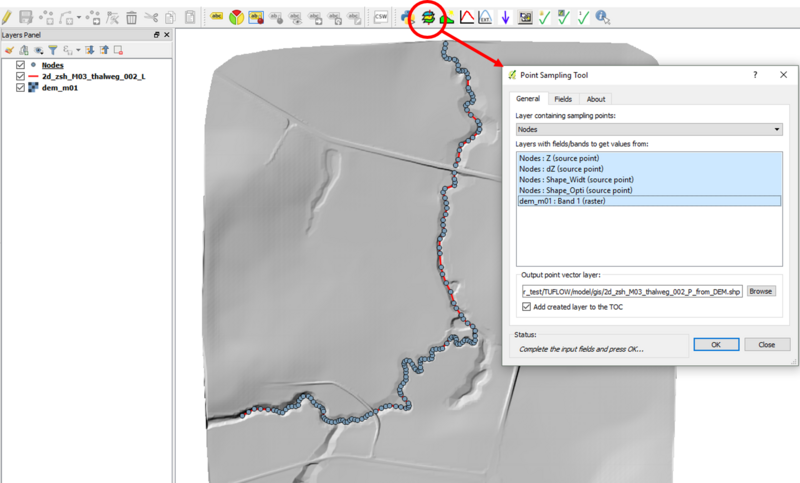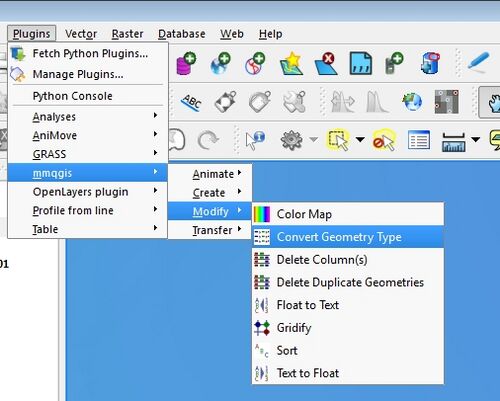QGIS Extract Ground Elevation: Difference between revisions
Jump to navigation
Jump to search
Content deleted Content added
| Line 11: | Line 11: | ||
<li>Convert line vertexes to points, using the preferred method described in [[QGIS_Convert_Lines_to_Points | this page]]</li> |
<li>Convert line vertexes to points, using the preferred method described in [[QGIS_Convert_Lines_to_Points | this page]]</li> |
||
<li>Open the Point Sampling Tool</li> |
<li>Open the Point Sampling Tool</li> |
||
[[File:QGIS Extract Ground Elevation 001.png| |
[[File:QGIS Extract Ground Elevation 001.png|800px]] |
||
<li>Set the following:<br> |
<li>Set the following:<br> |
||
* The source layer to be the line file you wish to convert |
* The source layer to be the line file you wish to convert |
||
Revision as of 17:07, 19 February 2018
Introduction
This page describes the method for extracting ground elevation (or any other variable) from raster files or polygon attribute using "Point Sampling Tool". This method is useful when you want to:
- Extract ground elevation for the points snapped to breaklines
- Define ground elevation for 1D nodes/pits snapped to 1D channel/pipes
- etc...
In the example below, the ground elevation for the 2d_zsh point layer in the TUFLOW Tutorial 03 is extracted from the DEM file.
Method
- Ensure that the Point Sampling Tool plugin has been loaded, and DEM and 2d_zsh line layer files are opened
- Convert line vertexes to points, using the preferred method described in this page
- Open the Point Sampling Tool
- Set the following:
- The source layer to be the line file you wish to convert
- The new geometry type to Nodes
- The output file

